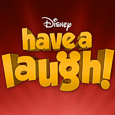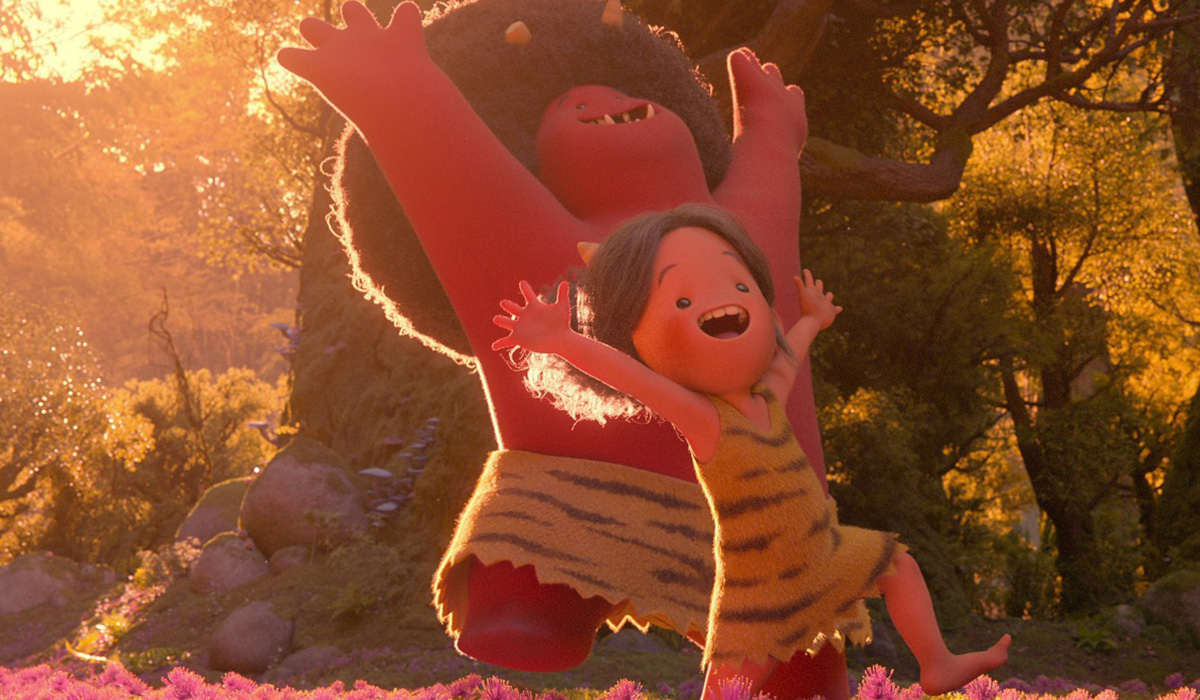There are (many) times when animation is entertaining. There are times when animation is educational. And there are times when animation helps healing.
That’s the case with Paul & the Dragon, an animated short created by two young and talented Dutch animators/directors, Paco Vink [below, left] and Albert ’t Hooft [right]. Their movie is about Paul, a young boy who has cancer, which his Doctor describes using a Dragon as a metaphor. With the support of his parents and the help of Birdy, the Medics and Chemo Blob, he’ll become a knight ready to fight and succeed against sickness.
With optimism, smartness and humor, the two directors have provided a unique offering to sick children (notably in hospitals), family and friends and it is our pleasure at Animated Views to bring our most sincere and enthusiastic support to this beautiful project, about which we talked with its creators.
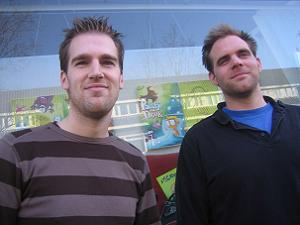
 Animated Views: How would you introduce Paul & the Dragon?
Animated Views: How would you introduce Paul & the Dragon?
Paco Vink: Paul and the Dragon is an educational adventure film about a boy and his fight with cancer.
Albert ’t Hooft: It is meant to support children with cancer and their families and friends. In the film we use a Dragon as a metaphor for cancer. The Dragon is eating from the forest, which represents the body of Paul, our main character. With the help of little medicine creatures and the support of his friends and family, Paul finds the courage and strength to become a knight and take on the Dragon.
AV: How did you come to the idea of making an animated film on a boy fighting cancer?
AH: It was about 4 years ago I met the father of Paul Junior, Paul Sanders Senior, and I told him I was studying animation. He told me about his son, who was 10 at the time and going through chemo therapy, and how little material there was for children with cancer. He asked me if it would be an idea to make an animated movie for these children. That’s how this project started. ‘Paultje’ is actually a Dutch way of saying ‘little’ Paul. His father’s name is also Paul. So there’s Paul Junior and Paul Senior.
PV: So yes, the characters of the boy Paul and his father were inspired by real life persons. We also inspired the design of the character on Paul, who used to have glasses and short blond hair. Now he is a healthy teenager with contact lenses and wavy long hair, so he doesn’t look anything like the character in the film anymore. Which just goes to show how long it takes for an animated film to get finished.
AV: Can you tell me about the research you did on cancer be it medically or humanly to better treat the subject an accurate, sensitive and well-balanced way on screen?
AH: When I started this project I had no experience with cancer or had no one close to me who went through such an experience. The first thing I thought to myself, ‘How can I as filmmaker help these children?’. We could’ve just done a simple educational film where we literally explain to children what cancer is, and explain to them step by step what chemo therapy is and what it does. But we wanted to do more than just a plain boring educational movie. We wanted to see if we could do more for these kids.
I started to read up on books (by Dr. Simonton and Gerald Jampolsky) about the psychology of cancer patients and what they have to go through. Mostly what I read was that patients go through is a rollercoaster of emotions such as anger, fear, depression, stress and a whole bunch of other negative emotions. Through various exercises and therapies they’d take on these negative emotions and turn them into positive ones. One of the exercises I was interested in was the ‘Healing with Humor’ one. I started to find out more about the effects of humor on patients and came across an interesting field of Psychoneuroimmunology (PNI). This field studies the relationship between the nervous system and the immune system and the effects of mental health on it.

I came across an interesting article called ‘Humor That Tumor’ by By Paul McGhee, PhD. I found out that there were experiments to see what the effects of humor had on one’s immune system. Apparently not only does humor help us psychologically but also boosts our immune system. I also came across an interesting study called Rx Laughter Therapy where instead of using only the latest pharmaceutical drugs, they basically had let the patients watch a whole bunch of comedies and cartoons to elevate pain and stress that patients have while going through chemo.
With this in mind I definitely knew we had to try and not only make the movie educational but also lighthearted and try to get some humor in there. This humor would be our gift to the kids. If we could make them laugh while watching we’d be doing a small part in the healing process.
Of course we didn’t just want to make it look like it’s fun to have cancer, so we tried to portray what a child could go through when he’s lying sick in hospital, as in not being able to play outside with his friends, sometime being alone in the hospital, taking all the medicines, getting poked and prodded by needles. So we tried to find a good balance of drama and humor. Of course they go through a lot more than what we portray in the film, but we tried to take the core of what a child goes through and fit it into 25 minutes of film. Originally, the film should have only been 10 minutes but there was so much we wanted to get in there, we ended up with 25.
Additional to all this reading I also did several interviews with Paul during the year he was sick and I was even allowed to witness Paul going through one of his chemo therapy sessions. I asked him about his thoughts about cancer and what he was going through. I also got in touch with the V.O.K.K. (Vereniging Ouders, Kinderen en Kanker) Organization. This is a communal organization of parents with children with cancer, and got a lot of feedback from the people working there. Always checking if I was going in the right direction and making sure I wasn’t portraying the children in a wrong way. At one point we showed the final storyboard to a small group of parents and children and the reactions were positive.

AV: What was the main challenge of the movie?
AH: Our main challenge was the story. Trying to explain what cancer is to a child is already tough enough and then doing it without dialogue was even tougher. The toughest was explaining the Dragon was a metaphor for cancer. We were always worried that people wouldn’t get the link between the two.
I had written some poetic versions but nothing that I thought would be enjoyable and useful for the children. During one of my interviews with Paul, he showed me that he liked painting little toy figurines. He gave me one of these and it was a small knight. And then it hit me. Paul is a like a knight who has to go to battle with a dragon.
As for the other creatures, we took the basics of what chemo therapy is and translated it into the roles that the medicines and Chemo Blob take on. Basically the way chemo therapy works is they first administer different types of medicines (the blue medics) to protect your lungs, heart, kidneys and other vital organs. Then they inject you with chemo which not only kills the bad cells but also the good cells. So the blue medics keep Chemo Blob in check and make sure he doesn’t eat too much of the forest.
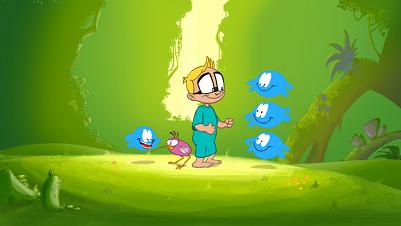
PV: Getting the story straight was definitely the main challenge. I remember we had a moving storyboard version of the film and we were kinda proud of it. Then we took it to longtime animator and Oscar winner Borge Ring to view it. After like, 20 seconds he already switched it off and stopped watching it. He said “Learn to kill your darlings”. Meaning we had to learn to let go of our first ideas, even though you may like them, you have to be able to watch your film very critically and keep improving on it. If that means dropping old ideas, so be it. It can be real tough to let go of some of those ideas, but in the end if that’s what’s best for the film, then that’s all that matters. After this meeting with Borge, we started re-writing the story and changing it entirely. And we did that again and again. I think a story is never really done, it can always be improved. But at some point you also just have to say we did the best we could and now it’s on to the next project.
I remember at one point we were struggling to portray chemo therapy and how medicines work. In one storyboard version we showed the chemo as a out of control flying sword, which helped Paul defeat the Dragon, but it also cut of his hair. We also had trees in the forest giving Paul his strength. When we realized this wasn’t really working story wise, we decided to turn them into simple characters. The Chemo Blob [below] we basically treated like Cookie Monster, he doesn’t mean to eat, but he just can’t help himself. The other medicines have to keep him in check and make him focus on defeating the dragon.
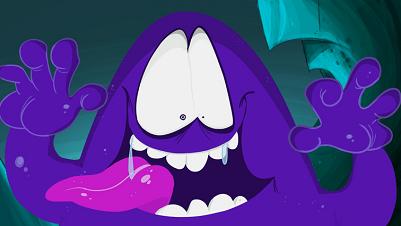
AV: Did you know about the Albert Barille/Prodicis animated series Once upon a time…life? Did you draw some of your inspiration from it?
AH: Yes absolutely, it was the first series I remember where they gave visual form to the inner workings of the human body.
PV: I also remember vaguely watching these series as a child, but it wasn’t really a direct source of inspiration for the film. We mostly tried to work with different metaphors. Borge Ring’s Run of the Mill, an animated short film about drug addiction, was actually more of an inspiration in the way we wanted to tell the story. It’s a great example how it’s possible to convey a serious message without dialogue.

AV: What did you want to express through your movie?
AH: We wanted to show the children that they are brave warriors like Paul and that when things are looking down, they should never lose hope. We did try to show that the fight with cancer is not going to be an easy one and there are going to be a lot of ups and downs. Showing that they are not alone in the fight was also important.
AV: How did you come to choose hand-drawn animation to convey your story?
PV: Well, basically I’ve been drawing ever since I could hold a pencil, so it was kind of a logical step to go with hand drawn animation. We’re both big fans of the golden age cartoons. We find it visually and artistically so much more appealing. 2D hand drawn often has a kind of warmth, atmosphere and a life you hardly find in 3D animated films or library based cut out animation you see a lot on television nowadays.
AV: The golden age influence is clear: in the hospital, near the Doctor’s office, we can see portraits of figures from the history of animation. Can you tell me about that?
PV: We wanted to do this gag in the hospital where Paul’s looking at pictures of old doctors hanging on the wall and one of the portraits suddenly comes to life, which turns out not to be a portrait, but the doctor standing in the door opening. We thought it would be great to bring a little homage to three of the greatest cartoon directors. So we have Chuck Jones, Tex Avery and Bob Clampett as doctors hanging on the wall in that scene.

During the production of the film we were watching a lot of the classic Warner cartoons and documentaries about Termite Terrace. We were basically studying classic cartoon animation, something we never got to do in our art and animation academy. Of course the Warner cartoons have always been an influence on my work, but when watching them frame by frame and really dissecting them, that helped me understand better what’s visually possible with hand-drawn animation. So during the animation process we were constantly trying to push the poses stronger and clearer and also have these funny crazy in-between drawings.
AV: The animation of the short is very energetic and fast-paced, very “cartoony” in a way. Can you tell me about it?
PV: Mostly it had a practical reason, because we only had about two animators at a time working on this project, so we relied a lot on fast pose to pose animation to get things done. Every now and then we could put in some more fluid animation, but time and budget were quite limited, so we had to improvise a bit with the animation.
Of course the fast pacing also comes from the way we wanted to tell the story, without dialogue. Story wise we needed to set up the metaphors quickly, so we could get the story going and spend more time with the main character and all the emotions he goes through.

AV: Can you tell me about the fact that the movie is silent (no dialogue – but a great score!). Everything is conveyed by pure animation and music. Can you tell me how you worked on that aspect story-wise, animation-wise and music-wise?
AH: In the beginning it was kinda tough not using any dialogue and then try to explain a situation such as cancer. But without dialogue it challenged us in visual storytelling. Everything then comes down to clear staging, emotions, storytelling and acting.
PV: After a while it just became natural, very liberating and fun, working without dialogue. If the audience can clearly see that the character is sad, mad, happy, they’ll feel it and won’t have to hear that character say anything. Many classic cartoons (like Roadrunner and Tom & Jerry) don’t rely on dialogue at all. We knew that then the music and sound effects would become very important. We’re extremely happy with the soundtrack by the talented Maarten Spruijt. The music had to become the voice of some of the characters (for example the Dragon and the sidekick little bird have their own themes). But we also wanted the music to underline some of the typical cartoon action (like Carl Stalling did with the Looney Tunes). Maarten found this perfect balance between beautiful overall themes and typical cartoony music.
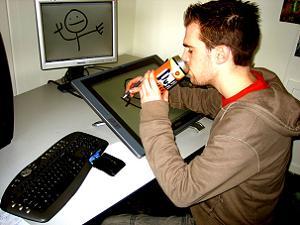
AV: What was the production of the short like at Anikey?
AH: It was just the two of us in the beginning. Most of our animation crew consisted of a couple of talented interns from our old art academy. As directors we basically took each scene and discussed what would work best for the story. The tasks where primarily split into Paco handling the animation and background art, while I would concentrate on coloring, special effects and post production. Before we did anything we always rigorously debate on how we could improve each scene and shot.
PV: When we were still working on the story, we’d make little thumbnail sketches of the scenes and come up with different ways of telling a scene or gag. Even when we already started animation, we were still coming up with new scenes, shots and gags to improve the film. This made the animation process very organic and fun. Of course we still pretty much followed our storyboards, but because we didn’t have a very big team, it was easy to quickly make last minute changes in the story.
For example, we added a complete scene with a little bird getting chased out of the forest by the Dragon. This was never in the storyboard, but we felt we needed to show a character being threatened in the forest by this brutal dragon. Showing the Dragon eating a couple of trees could have easily worked to explain the metaphor. But showing this harmless tiny bird fleeing with its eggs away from the Dragon was a much stronger way of showing that this Dragon means no good to the life in the forest.
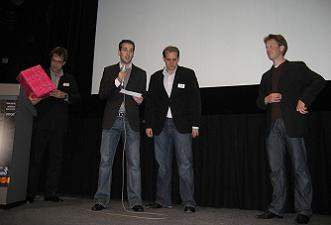
AV: How was the film received in Netherlands?
AH: When the movie was finished we premiered it first at a conference. This conference was for parents and children with cancer and even parents that had lost children to cancer. We were sweating buckets, but fortunately at the credits, everyone stood up and applauded. We were told by a mother who had lost her daughter, that the film was extremely recognizable and portrayed very well what the family went through. The movie was distributed last February [2009] to all the children and hospitals here in Holland. We got some good responses from parents and children on our guestbook, so yes we do feel we are helping them in a way.
AV: The fact that the movie is silent is a great asset for international promotion.
AH: So far the responses have been positive from the medical community. We are hoping that the film also gets some more exposure at festivals this year. The VOKK organization (which distributes the film in Holland) is attending various international oncology conferences. We’re basically looking for similar organizations (like the VOKK) in other countries, that can make sure the film will reach the children, families, hospitals and schools. At the moment we’re distributing it through DVDs.
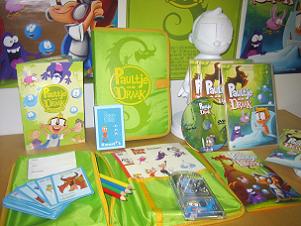
AV: What can you tell us about your upcoming projects?
PV: At the moment we are busy working on a new independent short film, Little Quentin. It’s an animated film noir, very different from the colorful Paul and the Dragon. We hope to complete this before the summer. We are also busy with our producers (il Luster Productions) to try and set up a feature film project here in Holland.
Our thanks go to Paco Vink and Albert ’t Hooft.
Paul & The Dragon is distributed in Holland by the Dutch Childhood Cancer Parent Organisation VOKK, a national organisation of parents of children with cancer, offering information and help to other parents, schools and guardians for children suffering with cancer.
The Paul & The Dragon DVD is available from the VOKK for 5 Euros, which goes to the organisation. International orders should email this address: bureau(at)vokk.nl but remember that the DVD is in PAL format with Dutch text.
AniKey and their producers il Luster Films are keen to secure international distribution for their film. If you represent an organisation similar to the VOKK in your country that may be interested in distributing Paul & The Dragon to children, schools and hospitals, or able to sponsor the translating and printing of the DVD package’s text into other languages, please contact info(at)illuster.nl for details.
More information on the film’s creators and other projects can be found at the AniKey Studios website.
Visit Paul & The Dragon’s Dutch/English language website for a look at the film’s production process and trailer.



